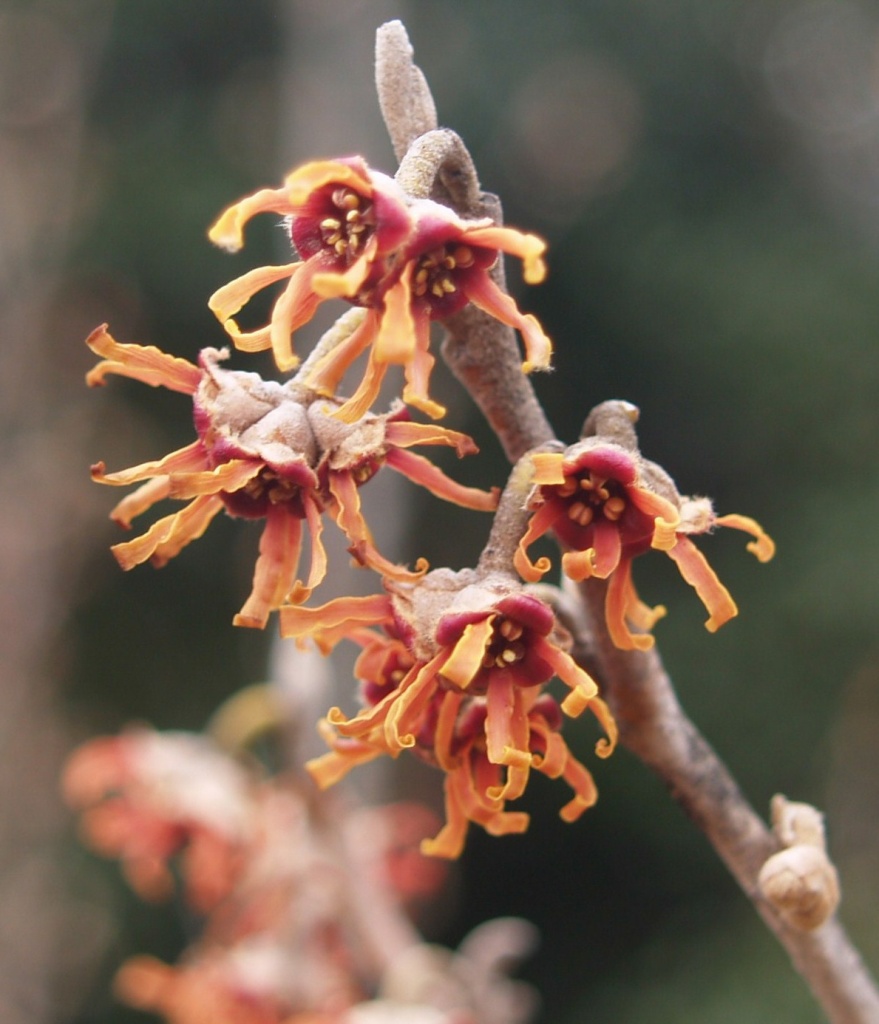This garden is positioned with tall maples and tulip poplars along its southwestern border, with the consequence that snow melts more slowly than on more exposed neighboring properties. While neighbors’ lawns are almost clear, only small parts of the garden are visible two weeks after the blizzard. I am encouraged, however, that thirty or more inches have melted to six or less in most areas.
I could not muster the energy to struggle through waist deep drifts to view witch hazels in the week following the storm, but this afternoon as I slopped through ankle deep slush in the soggy rear garden I could smell the fragrant Vernal witch hazel (Hamamelis vernalis, above) long before I could see its flowers. Parts of the shrubby tree that flowered earliest, in late December, are beginning to fade from bloom, and I expect flowers will fade completely in another week or two.
Which, will coincide fortuitously with the hybrid witch hazels (Hamamelis x intermedia) coming into bloom. A few scattered flowers are evident on ‘Diane’ (above), and ‘Arnold Promise’ and ‘Jelena’ should not be far behind. ‘Arnold Promise’ is the most floriferous of the three, and the forsythia yellow blooms stand out more clearly than the ruddy red and orange of ‘Diane’ and ‘Jelena’.
Several hellebores (Helleborus x hybridus, above and below) have been exposed by the melting snow, and as expected, flowers hardly faded in the period they were buried. Blooms that were fading before the snow look a bit more haggard today, but newly opened flowers show no distress, and several buds are just beginning to open.
With typical, or perhaps slightly milder temperatures forecast for the coming weeks, there is good reason to expect hellebores and witch hazels to continue through their bloom cycle, which should extend into early March.
The paperbushes (Edgeworthia chrysantha, above) are showing their first bit of color along the edges, and with several mild days these will progress to full bloom before the start of March. These have hardly flowered in two recent cold winters when buds were damaged, so I am greatly encouraged on this afternoon, despite chilly toes from snow and slush leaking over the top of my muck boots.